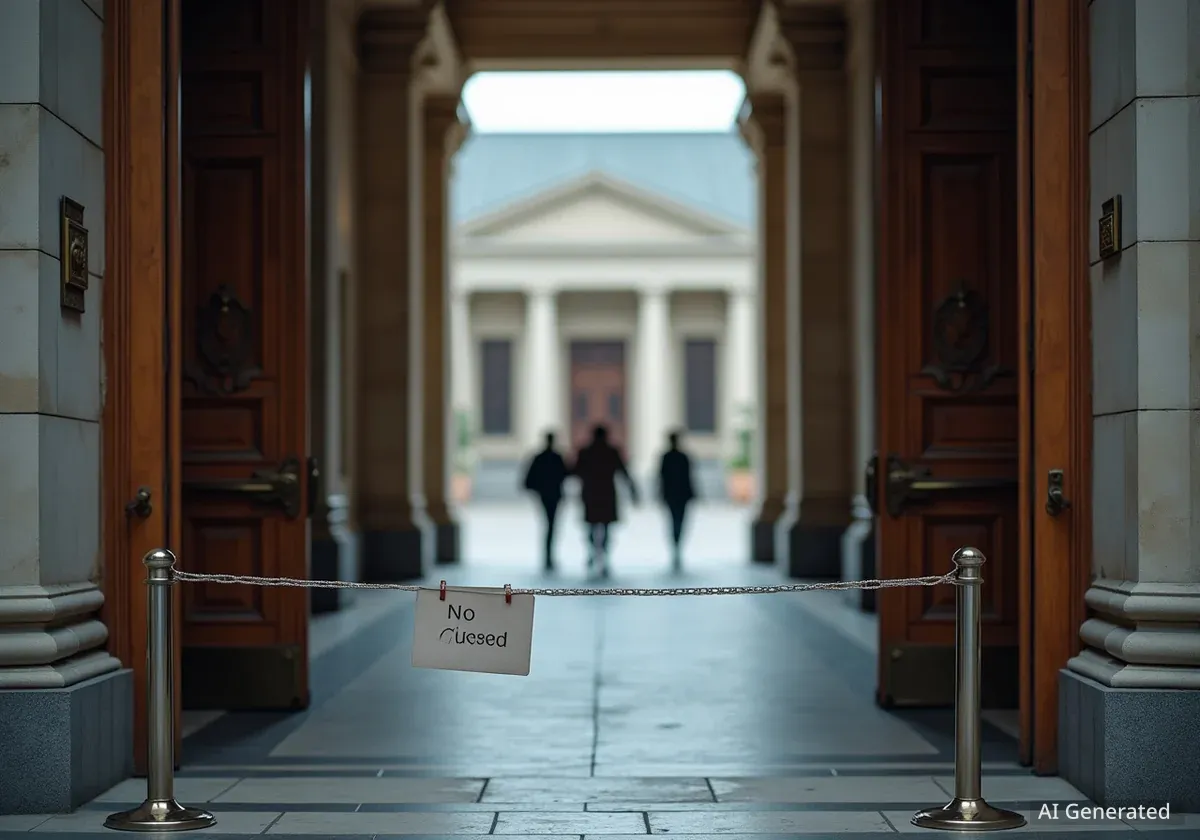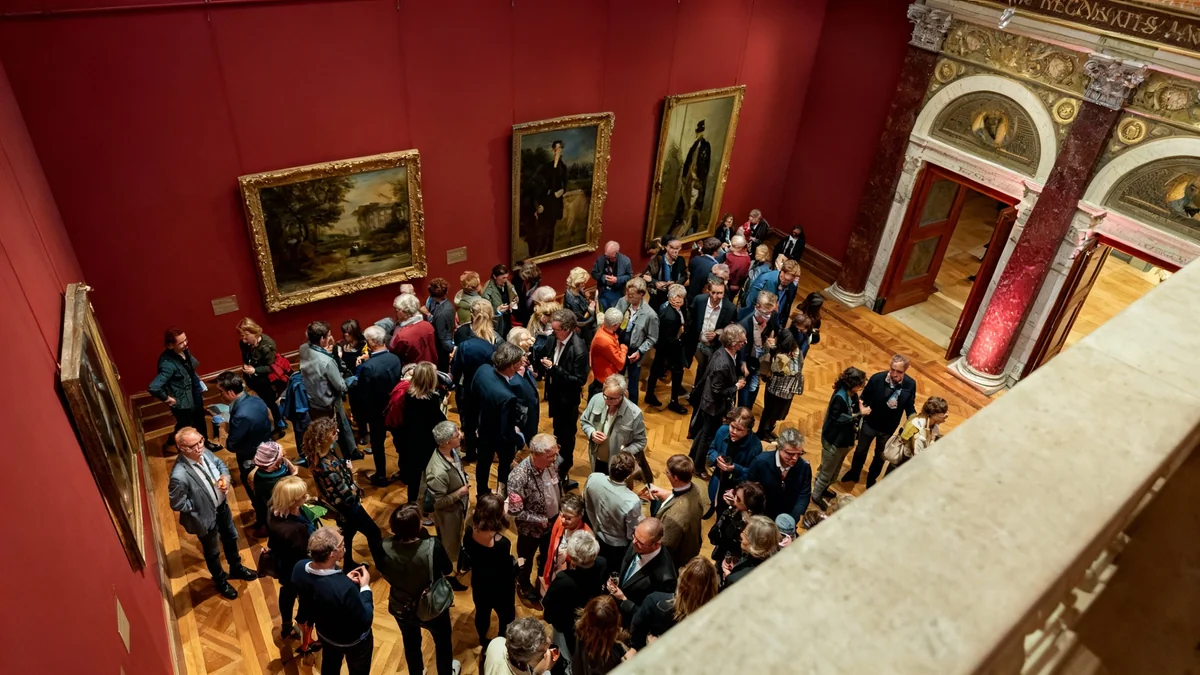Several prominent French museums, monuments, and cultural institutions experienced closures on Thursday, September 18. The closures were due to a one-day strike organized in protest against government budget austerity measures. This action followed partial shutdowns a week prior, prompted by a movement called “let’s block everything,” which had support from various unions.
Among the affected sites were the Louvre Museum, the Palace of Versailles, and the exhibition galleries at the Grand Palais. These venues were either fully or partially inaccessible to the public. Employees at the Musée d’Orsay adopted a different approach, allowing visitors to enter the museum without charge.
Key Takeaways
- Over 50 French cultural venues closed due to strikes against budget cuts.
- The Bayeux Tapestry's transport for renovation was delayed.
- Public debt in France has reached 113% of GDP.
- Concerns persist over the Bayeux Tapestry's fragility for international loan.
Widespread Closures Across France
The impact of the strike extended beyond Paris. In the capital, the Arc de Triomphe, the Eiffel Tower, the Panthéon, and the Musée Picasso were all closed. Across France, dozens of other monuments and institutions also ceased operations for the day.
Representatives from the national union CGT reported that workers at more than 50 theaters and concert halls voted to participate in the strike. This widespread participation highlights the deep concerns within the cultural sector regarding the government's financial policies.
Fact: French Public Debt
France's public debt has increased to 113% of its Gross Domestic Product (GDP). This financial strain is a key factor behind the government's austerity measures.
Protests Target Culture Ministry
Demonstrators gathered in front of the office of Culture Minister Rachida Dati to voice their opposition. The protests underscored the cultural workers' demands for improved funding and a reversal of budget cuts.
According to union statements, the closures were a direct response to what workers view as insufficient investment in a sector vital to national identity and tourism. The cultural sector, despite being heavily subsidized, has faced significant reductions in recent years.
Bayeux Tapestry Transport Delayed
The strikes also had an unexpected consequence in Normandy. The Musée de la Tapisserie de Bayeux, currently closed for a two-year renovation project, experienced a delay in a critical operation.
The scheduled removal of the Bayeux Tapestry, a 70-meter-long embroidered cloth, had to be postponed. This iconic piece, which depicts the 1066 Norman invasion of England, was slated for transport.
"France resisted loan of Bayeux Tapestry for ‘decades’," President Emmanuel Macron stated during a visit to the British Museum, highlighting the historical reluctance to move the artifact.
Journey to the British Museum
The embroidery, often mistakenly called a tapestry, is intended to travel to an undisclosed intermediary site first. Following this, it is planned for transport across the English Channel to the British Museum in London. It is expected to be displayed there in September 2026.
This planned loan has generated considerable debate and concern. Many individuals worry about the fragility of the ancient embroidery and question the safety of transporting it internationally.
Background: The Bayeux Tapestry
The Bayeux Tapestry is an embroidered cloth nearly 70 meters long and 50 centimeters tall. It depicts the events leading up to the Norman conquest of England in 1066, culminating in the Battle of Hastings. It is one of the most important historical artifacts in Europe.
Concerns Over Tapestry Fragility
More than 73,000 people have signed an online petition. This petition calls for the cancellation of the loan, citing fears that the embroidery is too delicate to withstand the journey.
The loan was initially promised to former British Prime Minister Keith Starmer by French President Emmanuel Macron. Despite the public outcry, both the British Museum’s director, Nicholas Cullinan, and the French President’s office maintain that the embroidery is safe to travel to London.
Government Instability and Economic Challenges
The strikes and cultural sector unrest occur during a period of political instability in France. The country has seen five prime ministers since 2024. A no-confidence vote in parliament is anticipated, potentially leading to the formation of a new government.
This political environment is intertwined with significant economic challenges. France is grappling with a public debt that has escalated to 113% of its gross domestic product. This financial pressure is a primary driver for the government's austerity measures, which have impacted various sectors, including culture.
- Cultural Subsidies: France's cultural sector traditionally receives substantial government subsidies.
- Recent Cuts: Despite this, the sector has experienced significant budget reductions in recent years.
- Worker Impact: These cuts have led to job insecurity and reduced operational capacities for many institutions.
The ongoing protests reflect a broader discontent among public sector workers. They are concerned about the long-term effects of austerity on essential services and cultural preservation. The closures on September 18 served as a visible demonstration of this opposition.
The future of cultural funding in France remains a critical issue. Workers and institutions are advocating for sustained investment to protect and promote the nation's rich heritage.




